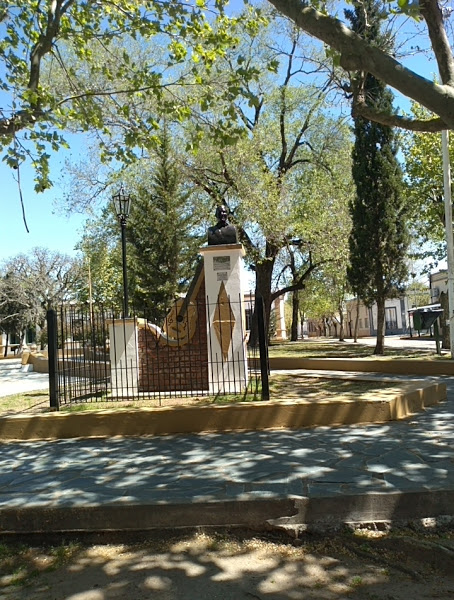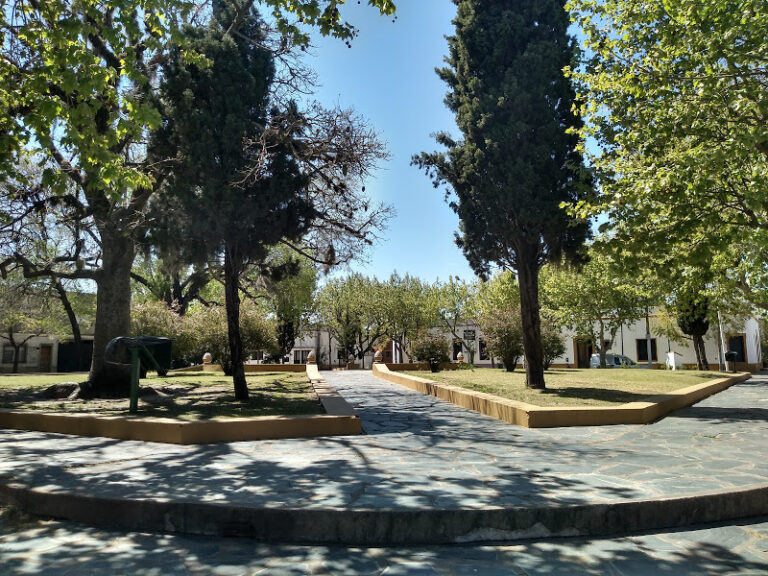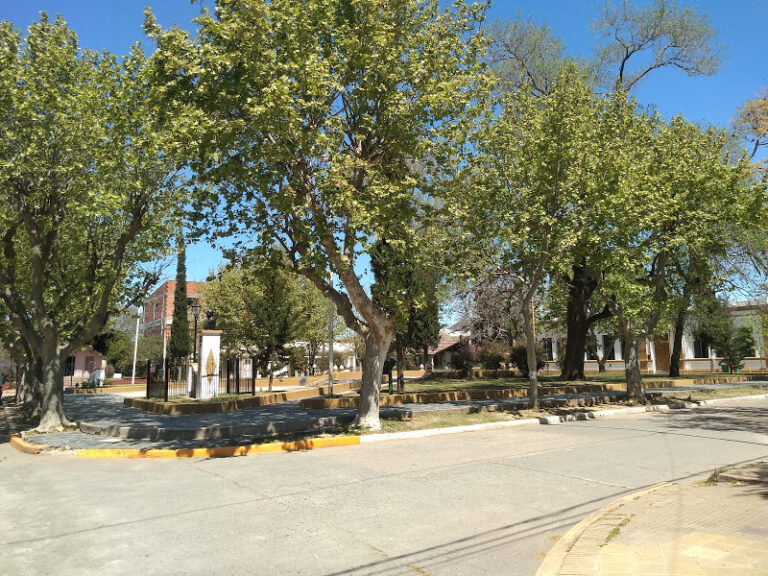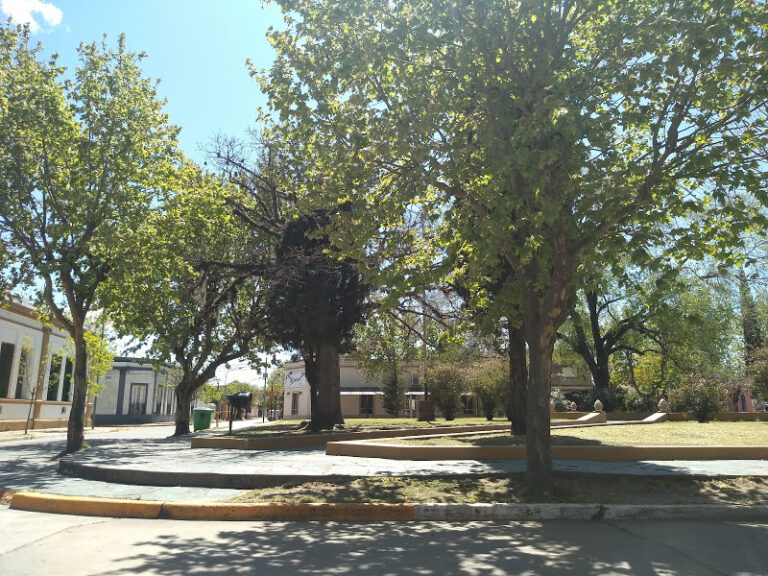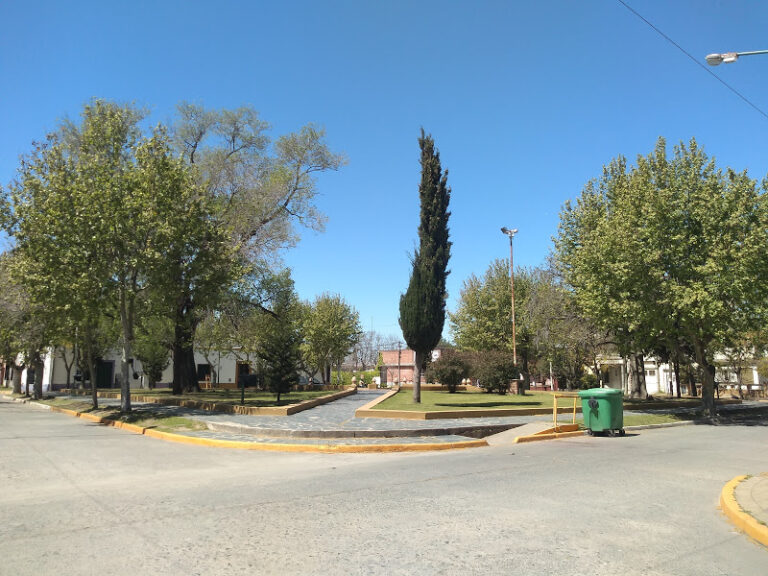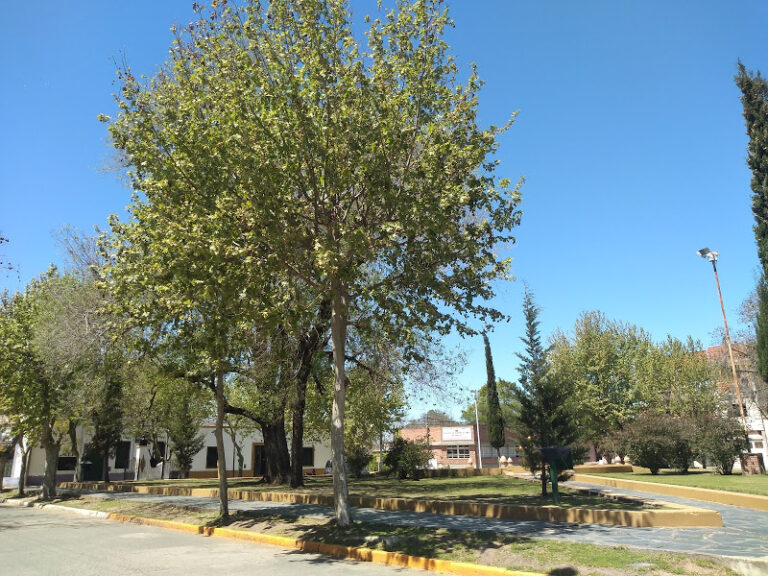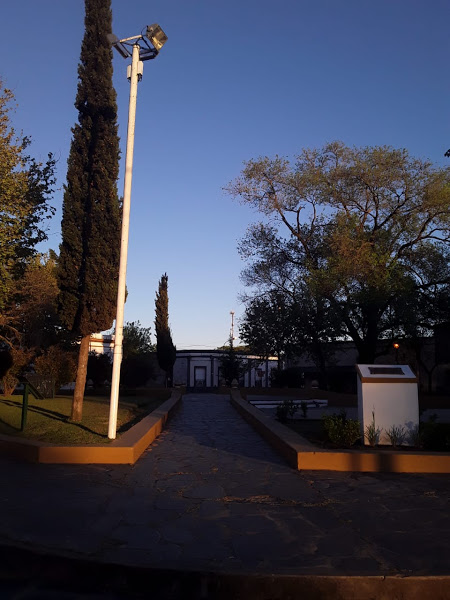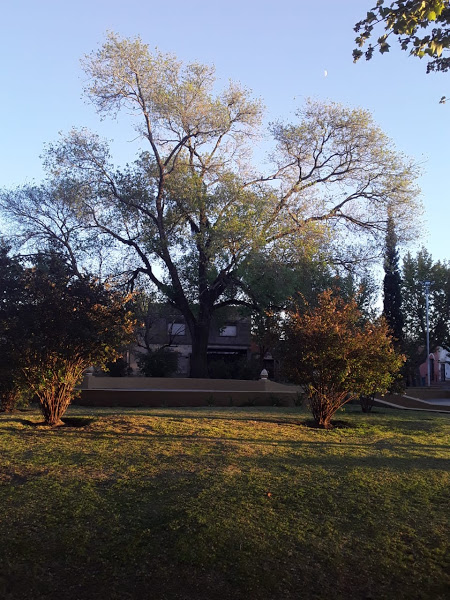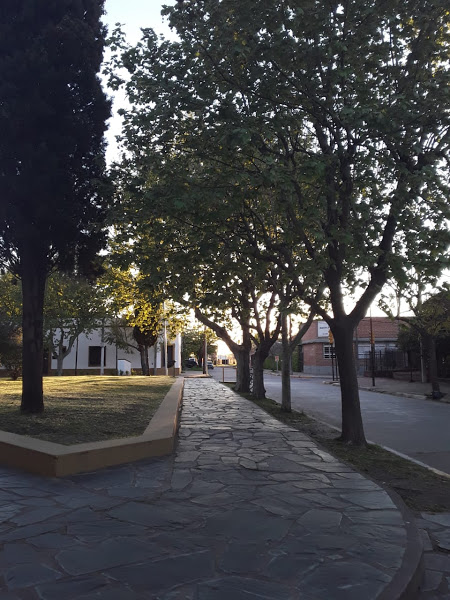Plaza Dr. Raúl Carlos Iribarne-English
septiembre 20, 2021 2021-10-13 15:02Plaza Dr. Raúl Carlos Iribarne-English
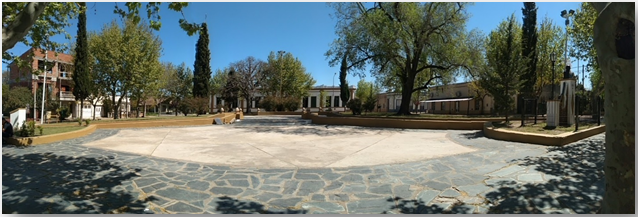
Panoramic image of the old Plaza España, today called Plaza Dr. Raúl Carlos Iribarne, former mayor of our city. On the right you can see the bust of Carlos Gardel and on the horizon the school No. 16 «Vicente López y Planes».
In homage to the memory of D. Juan José de Sardén and to all the humble ignored heroes, dragons, militiamen and Blandengues who, with the tribute of their generous blood, contributed to raising on the infinite desert of la Pampa, the foundations of this historic town.
The town of San Miguel del Monte, was born during the second half of the 18th century, placed next to a fort located on the northeast of the lagoon, in lands that belonged to the extensive Matanza area; Undoubtedly, it was strategically located in the very centre of the immense royal fields where the great massacres of the raised or wild livestock were carried out, for the use of fats and leather, the only and great rural industry of that time. The Guardia del Monte in its early days must have been a precarious refuge. Militiamen guarded the extreme limits of the states/farm. The guard received various designations: Guardia del Monte, Guardia de la Laguna de Monte, Guardia de San Miguel del Monte (in homage to the patron saint, San Miguel Arcangel), Guardia de San Miguel del Monte Gargano and Guardia del Pago de La Matanza. According to very old documents, these lands were called San Miguel del Monte Gárgano. The designation of Gárgano responds to the mountain located in southern Italy, where, according to legend, the Arcangel San Miguel appeared for the first time to the people who resisted the barbarians. The National Commission of Museums , Monuments and Historic Places restored to the city of Monte its old name of «San Miguel del Monte Gárgano» in December 1980.
Frontier’s Command
It was, at that moment, that Monte’s administrative life started. As a result of the first settlers, the guard/police department gave way to the fort and it was then that the interior of the province began being populated. In the fort, we found the “Blandengues”, who were the border troops, armed with guns and swords. It was during this period that an administrative division of the area was made and the district of San Vicente was created, which included the fort of Monte. The last one belonged to the curacy of San Vicente. In 1821, a new district was created and it was formed by the Guard of Monte and Ranchos. However, it was annulled in 1822 when the parties of Guardia del Monte were formed on one side and the Ranchos, on the other. At the same time, the Mayors of Brotherhood disappeared along with the “Cabildos” and the Justice of Peace began doing its job/fuctions. A new administrative period had begun. The outstanding Justice of Peace was Vicente González – the carancho – landowner of Rosas and, undoubtedly, one of the most trusted people in the Rosista environment of the Guardia del Monte. He was in charge four times. It was the incentive to grow vegetables and the distribution of farms in the town (a task controlled by Vicente González, his landowner) that allowed many inhabitants to access land ownership. The implementation of this last measure favored especially the growth of the Guard and the number of vegetable gardens increased the production of farm products. These were times when Monte was the centre of an intensive activity, especially, from a politic point of view, and it was represented by Juan Manuel de Rosas. He formed a defense group to secure the border and created in «Los Cerrillos» the cavalry corps called «Los Colorados del Monte». They were named that way, due to the colour of their uniforms and because they were approximately formed by 600 armed men.
La plaza España, la principal para esa época, estaba rodeada de las principales construcciones, destacándose el fuerte, contiguo al mismo, el parque de artillería, la maestranza y los cuarteles de tropa. En la manzana que miraba al sur y frente al fuerte, se hallaba al cementerio y a su costado, el hospital. También se destacaba la Iglesia que Rosas había hecho construir (solar en el que hoy se encuentra la escuela N°16).
Sol Iribarne Interview (hija del Ex Intendente Dr. Raúl Carlos Iribarne) – 23 de Septiembre de 2020.

